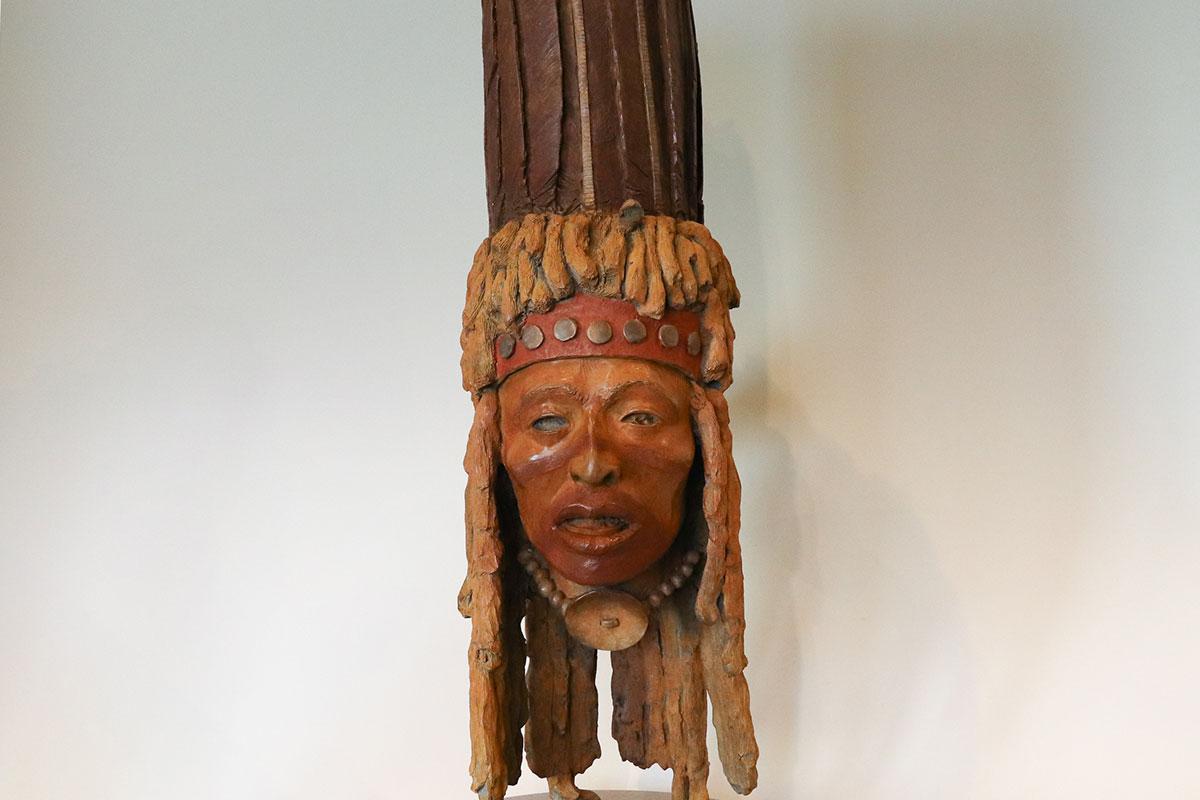Written by Peninah Feldman: A deep dive into a bronze sculpture titled Siksiká constructed by Paul Pletka and donated by Dr. and Mrs. Robert Sammons, Dr. Larry Copeland, Harold and Ruth Moss, and Ann Mosier and stored in The Art Center’s Permanent Collection.
Within the Art Center of Western Colorado there is an assortment of spectacular pieces in the Permanent Collection. The intention of Collection Corner is to explore and shine a light on these works. One piece from the collection that drew fascination was the bronze Ute (head) sculpted by Paul Pletka.
This bronze head was modeled with realistic proportions and in tune with Pletka’s style of hyper-realistic features. Executed at a high-class foundry, Pletka molded the original form in clay but didn’t cast and pour the 3-D pieces himself. He did, however, oversee the entire casting and was present for the actual pouring of the bronze heads, a group of 12 cast heads. The Ute Indian sculpture heads were then cleaned and shaped from the casting and patina added with a natural, realistic color scheme, all done by experts at the foundry. The final pieces are flawless bronzes, floating heads, of a realistic Neolithic Ute Native American on stone bases.
Pletka first spent countless hours crafting the head in oil base clay to create the initial form without using a single model or reference. “The heads come to life, crafted from my own imagination,” Pletka states. “I prefer it this way. I have been creating without models for over 50 years, I am happier to do it this way. I am able to put more of myself into the final piece.” His process allows him to show a true reflection of himself in his art.
Staying true to the realistic theme, Pletka constructed this sculpture with love and respect, putting countless hours into the carving and modeling of the clay. He spent time assembling the clay head with care, thinking of how to shape the clay for a seamless pour so the molds of the head could fill without any air pockets when pouring the molten bronze into them.
The molded clay was then transferred into wax, then dipped in many stages forming a thick exterior layer of ceramic and sand. This process is known as the Lost Wax Method. The molds were then heated to over 1000°F in a kiln to melt out the wax from the interior casting, leaving the exterior ceramic shell mold. The empty ceramic shells were then reheated, and bronze was poured into them, creating the final sculpture. After breaking away the exterior shell, any imperfections that were left by the casting process could be ground down. Finally, the base was attached and patina process completed. The patina process is a fine science that includes perfect temperature gauging to achieve the desired colors. If the metal is slightly overheated, discoloration will occur and affect the outcome of the final piece. Immense skill was required with the patina process to achieve the natural hues of color evenly and enhance the natural shadow of the face of these bronze Ute heads.
It was an honor to highlight Paul Pletka’s work and to bring light to this piece alongside the other greats of history. Also, this is a reminder to dive deep into the history of art. You will always be surprised at the worlds hiding away within overlooked areas of art.
- Log in to post comments

